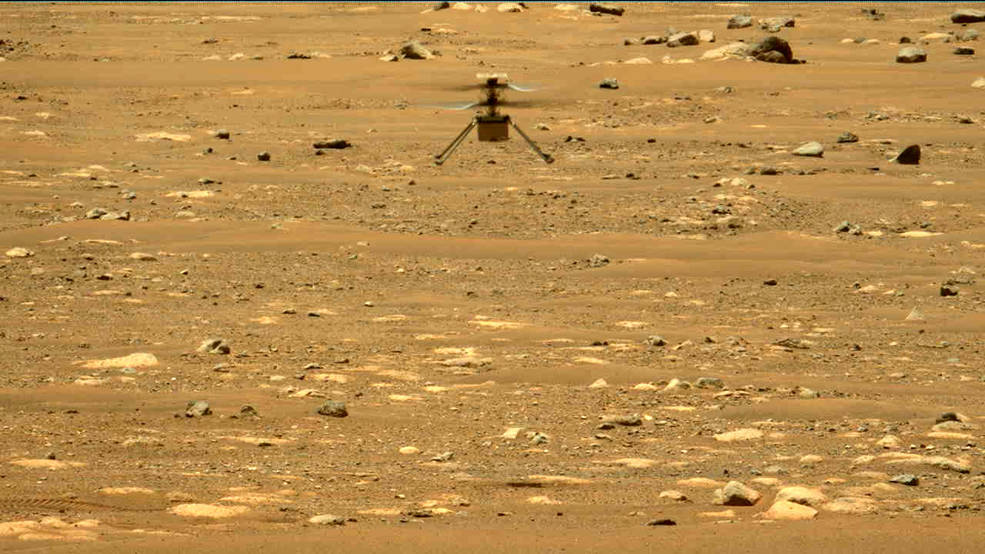 View Winners →
View Winners → 
NASA’s Ingenuity helicopter, designed and built at the Jet Propulsion Laboratory in Pasadena, successfully completed its second Mars flight this morning — three days after its inaugural journey made history by becoming the first aircraft to ever make a powered, controlled flight on another planet.
The JPL announced Thursday morning that Ingenuity’s second flight lasted 51.9 seconds — a bit longer than Monday’s 39-second maiden voyage.
The craft also climbed to an altitude of 16 feet (compared to Monday’s 10 feet) and added sideways movement.
“So far, the engineering telemetry we have received and analyzed tell us that the flight met expectations and our prior computer modeling has been accurate,” said Bob Balaram, chief engineer for the Ingenuity Mars Helicopter at the JPL.
“We have two flights of Mars under our belts, which means that there is still a lot to learn during this month of Ingenuity.”
The tiny, solar-powered helicopter was carried to Mars attached to the belly of the Perseverance rover.
For Thursday’s second flight test at “Wright Brothers Field,” Ingenuity took off again at 2:33 a.m. PDT, the JPL said.
After hovering briefly, its flight-control system performed a slight (5-degree) tilt — allowing some of the thrust from the counter-rotating rotors to accelerate the craft sideways for seven feet, according to the JPL.
“The helicopter came to a stop, hovered in place, and made turns to point its camera in different directions,” said Havard Grip, Ingenuity’s chief pilot at JPL.
“Then it headed back to the center of the airfield to land. It sounds simple, but there are many unknowns regarding how to fly a helicopter on Mars. That’s why we’re here — to make these unknowns known.”
One of the big questions going into Ingenuity’s flights was whether a helicopter could fly in Mars’ thin atmosphere — only about 1 percent of the earth’s. Now that question has been answered in the affirmative twice.
“Each second of each flight provides an abundance of Mars in-flight data for comparison to the modeling, simulations and tests performed back here on Earth,” the JPL said in a statement. “And NASA also gains its first practical experience operating a rotorcraft remotely at Mars. These datasets will prove invaluable for potential future Mars missions that could enlist next- generation helicopters to add an aerial dimension to their explorations.”
As with the first test, the Perseverance rover obtained imagery of the flight attempt from 211 feet away, using its Navcam and Mastcam-Z imagers. The initial set of data — including imagery — from the flight was received by the Ingenuity team beginning at 6:20 a.m. PDT.
“For the second flight, we tried a slightly different approach to the zoom level on one of the cameras,” said Justin Maki, the Perseverance project’s imaging scientist and Mastcam-Z deputy principal investigator at JPL.
“For the first flight, one of the cameras was fully zoomed in on the takeoff and landing zone. For the second flight, we zoomed that camera out a bit for a wider field of view, so we can capture the full flight in both cameras, each at slightly different zoom levels.”
The Ingenuity team is now considering how best to expand the profiles of its next flights to acquire additional aeronautical data, the JPL said.








































































































